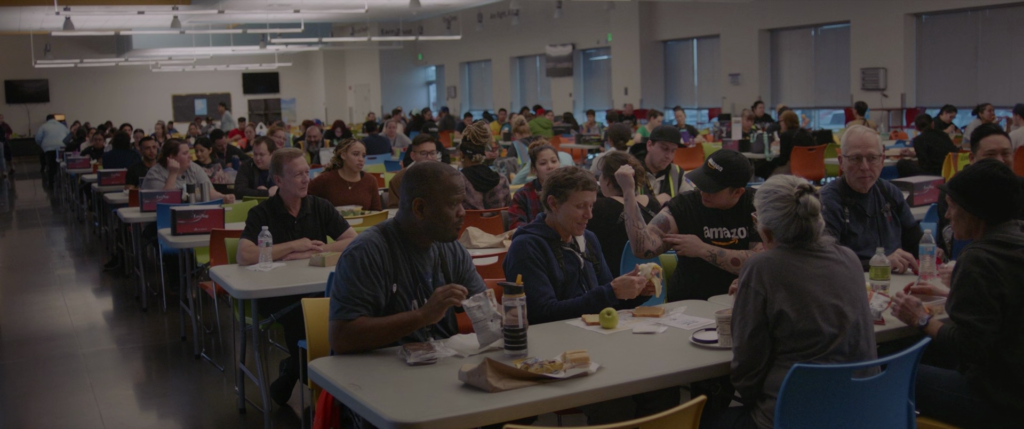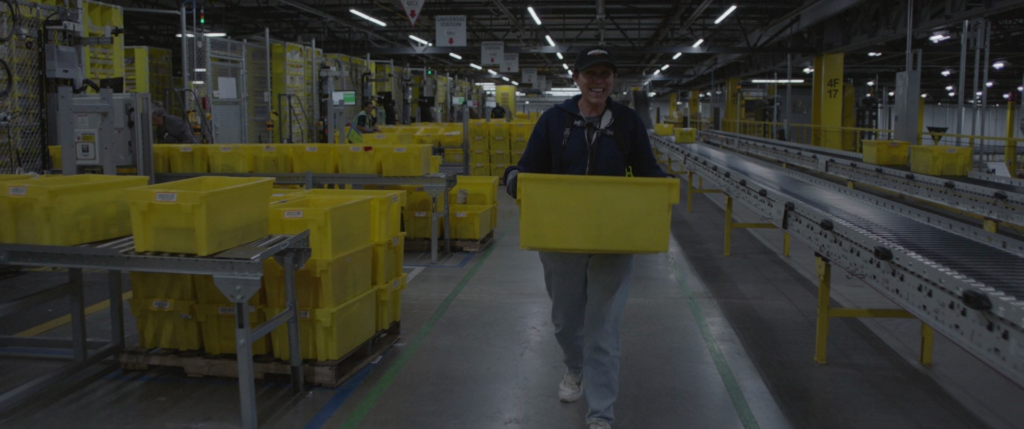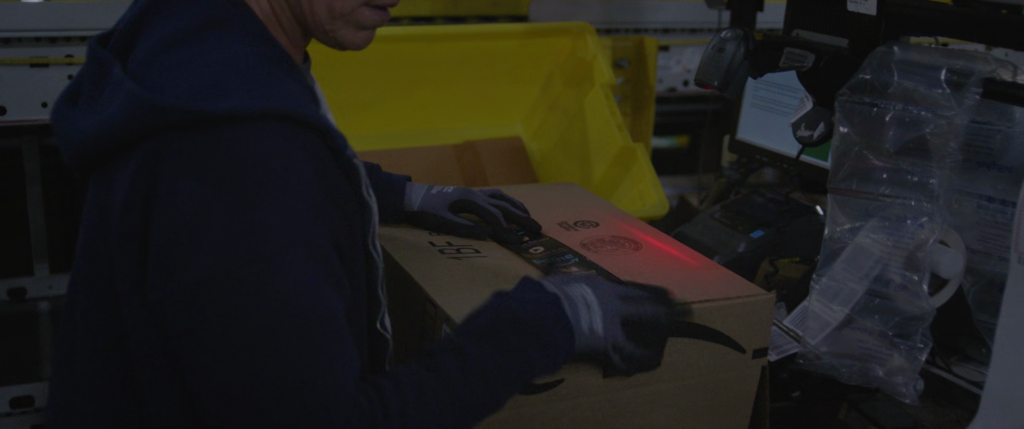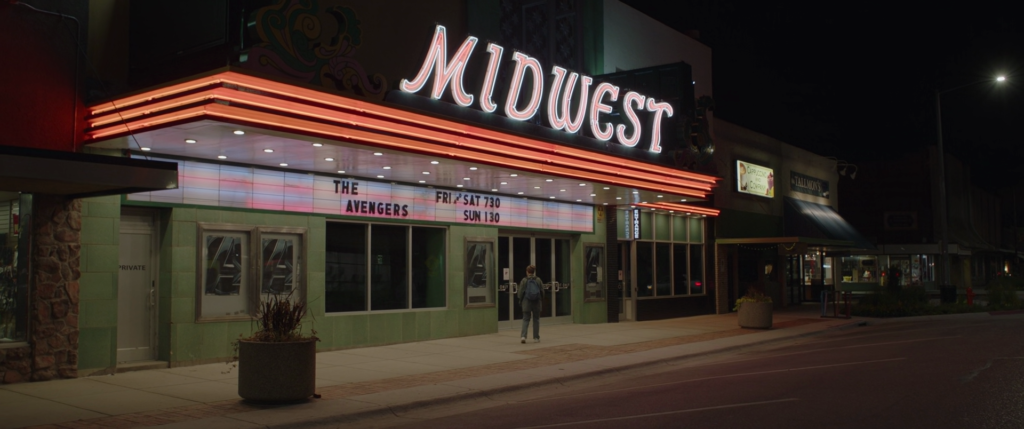
Attributing meaning or agency to the decisions of Oscar voters can be a tricky proposition. The Academy of Motion Picture Arts and Sciences is made up of nearly 10,000 members from across the film industry; nominees and winners are chosen by tallying individually submitted ballots rather than by committee. Is that a real democratic consensus? More often than not, it’s still just the power of studios, who run extensive campaigns promoting their films prior to Hollywood’s big night. When a movie takes home Best Picture, it’s not just the film itself winning, but the campaign—the narrative about the film also wins, and unofficially becomes the narrative that “Hollywood” wants to tell about the kinds of films it makes (at least until the next ceremony). Part of that narrative-building is done by critics—who of course aren’t taking money from movie executives, but do have an economic motivation to discuss, debate, and drum up support (or push back against) nominated movies. Any Oscar campaign worth its salt is able to exploit the discourse to its advantage, or, if necessary, to adapt methods to avert criticisms thrown its way.
Academy members have always been easy marks for movies about contemporary social issues, but in recent years they’ve also made an active push to award movies made by historically underrepresented groups. In 2013, 12 Years A Slave became the first film directed by a Black man to win the award; in 2017, Moonlight became the second (in addition to being the first led by an explicitly queer protagonist); and in 2019, the award went to a non-English language film, Parasite, in yet another first. None of these movies won for exactly the same reasons, nor was this story of progress without hitches along the way (the can’t we all get along race relations dramedy Green Book somehow won in 2019). But nevertheless, the Oscars, and Hollywood by extension, managed to successfully sell the image of an industry making strides in terms of representation during the 2010s.
Nomadland (2020), which won Best Picture late last month, is a strange candidate for this narrative of representation. Though the film is about poverty and houselessness—both social ills which affect a high proportion of Black and Brown people—the cast, most of whom are non-actors, is almost entirely white. However the film’s director, Chloe Zhao, is a Chinese woman who moved to the United States as a teenager. Her Best Director win made her the first woman of color, and only the second woman ever, to receive top honors for a filmmaker. Thus Nomadland was able to (mostly) avoid #OscarsSoWhite pushback.

However, another backlash to Nomadland took hold prior to Oscar night. Following months of good initial press, numerous articles began to pop up in early 2021 criticizing the scenes which take place at an Amazon warehouse, where protagonist Fern (Frances McDormand) works before (and, briefly, after) setting out in an RV on the open road. These sequences fail to accurately portray the harsh realities of working for the corporate behemoth, according to Vulture, The LA Times, Slate, and more outlets that published opinion pieces on the issue. This supposed dereliction of artistic responsibility was especially objectionable considering the timing—because while Zhao and the film’s distributor Searchlight Pictures were on the campaign trail, Amazon workers in Bessemer, Alabama were organizing a historic unionization effort (one defeated in early April following an intense and largely illegal anti-union drive by Amazon).
Here was an issue not of representation but of mass political struggle. And while Hollywood has accepted, at least on the surface, the responsibility to make itself less white, it has not been so clear about its responsibility to address workers’ rights. And this makes sense: Hollywood is made up of a small collection of multi-billion dollar corporations—AT&T, Comcast, Disney, Viacom, and Sony—which, not unlike Amazon, all deal with their own labor struggles.
So this was a more difficult critique for the Nomadland campaign to resolve; the articles even began to question if the controversy would hurt the film’s chances of winning. The large majority of subsequent pieces on Nomadland, specifically those concerning its presumed path to Oscar victory, felt the need to address the film’s angle on Amazon—and often in a way that acknowledged the importance of condemning Amazon while simultaneously justifying Nomadland’s failure to do so within the context of its larger artistic project.
A good example of such a piece is Vox’s roundtable featuring three critics discussing the 2021 Oscar nominees; a whole subheader is dedicated to “Nomadland’s handling of Amazon and the gig economy.” Alissa Wilkinson wrote that “Nomadland steers away from making overt statements about the gig economy and the way it can exploit low wage workers more broadly,” but “as a whole [it] feels like such blindingly huge critique of what America does to people who aren’t particularly well-off when they reach an age we used to call ‘retirement age’ that I read everything through that lens.” Emily VanDerWerff, who admittedly is critical of the film, said “[j]udging Nomadland by its seeming refusal to take a stance on Amazon is a bit of a false front” since the CamperForce job is shown as “just another horrible job Fern undertakes to keep her nomadic lifestyle running.” (Frances McDormand, in an interview with The Hollywood Reporter, doesn’t seem to agree the job is so horrible, arguing that it’s “hard work, but pays a wage.”) And Dylan Scott celebrates that the film avoids “being prescriptive,” further noting “that Nomadland doesn’t need to tell me that Amazon is bad.”

These defenses define the criticisms of the film as being primarily concerned with what information is being communicated to the audience—as in, because Nomadland communicates the theme that the elderly have lost their social safety net, it can be forgiven for not being explicit in communicating specific harms committed by Amazon within that larger picture. But the problem isn’t really about being told that Amazon is bad or not. Rather the problem involves the film’s aesthetic claims toward realism and truth—claims which are undermined by its failure to accurately portray the truth regarding the lives of the people it’s representing.
Nomadland is directed in a contemporary neorealist style which has become fairly commonplace among American indies on the festival circuit in recent years. It’s a style that signifies realism through learned-from-documentary formal choices like handheld camerawork and jump cuts, but also aspires to go beyond realism as a mode, to actually be as “real” as possible. In turn the cast is populated by actual nomads, and the production shot in many of the actual locations featured in the source material, Jessica Bruder’s 2017 nonfiction book Nomadland: Surviving America in the Twenty-First Century. One such location is an actual CamperForce site (Amazon workplaces that specifically employ RV drivers and vandwellers), and many of the extras in those scenes really have been employed by Amazon.
But in utilizing these docufiction techniques, Zhao chooses a veneer of reality over actual engagement with the experiences of workers. Yes, the contentious Amazon scenes are located in the real building where the CamperForce works—but in collaborating with Amazon to gain access to that space, Zhao sacrificed the ability to portray the sweatshop conditions of these warehouses, lest she jeopardize her relationship with the cooperating company. Thus she depicts glimpses of manual labor performed by Fern and the non-actor extras, broken up by scenes of a lunch break and a pep talk from a supervisor. The job comes off as merely tedious—“hard work” but a good day’s work, as per McDormand—rather than truly grueling and traumatic.
Time and again, Nomadland shows its preference for “reality” as a stylistic posture over depicting the actual experience of being poor in America—experiences which the non-professional members of its cast addressed explicitly in Bruder’s book. Linda May, who in the film convinces Fern to take to the road, made clear to Bruder that she “hate[d] this fucking job,” and with good reason—the work she’s shown doing for Amazon in the film caused her a painful repetitive stress injury in real life. But even scenes unrelated to Amazon display this flimsy grasp of the film’s very subject matter. Swankie, another nomad with a significant role in the film, tells Fern (in a story invented for the movie) that she chose not to undergo chemotherapy for her brain tumor because she didn’t want to spend the rest of her life in a hospital—with no mention of the prohibitive cost of healthcare in America.
In an interview with Vulture, Zhao justified her portrayal of Amazon by arguing that the company is “an easier villain than the structural issues that enable CamperForce to exist.” This, too, shows a deep lack of understanding of workers’ interaction with those structures, which are embodied and reified by the people who profit from them—not only the big bosses (Jeff Bezos’ net worth grew by $75 billion during 2020), but also Amazon’s supervisors and managers, who push low-level workers to meet intense shipping deadlines at the expense of the workers’ mental and physical health.
Capitalism is not a faceless or a blameless system—it engenders anger not only in the abstract, but concretely, directed at those who perpetrate its evils. That anger is nowhere to be seen in Nomadland. Only a moment at Fern’s sister’s cushy, upper middle class home personifies the dissatisfaction of the masses. But most of the working poor are not so lucky as to be treated like family at dinner parties attended by bankers or real estate developers, whom they can tell off for their role in causing the financial crisis as Fern does in an ostensibly cathartic moment. In the film there is no sense of the economic relations which govern interactions between the classes every day in workplaces across the country, even when the camera occupies the very spaces where those interactions occur.

It would be easy to say that political critiques of Nomadland are holding a commercial film to a ridiculous or unrealistic standard considering the nature of the industry, but I’m not so sure. While watching Nomadland, I couldn’t help but think of a very similar film made 80 years earlier: The Grapes of Wrath (1940), another story of American nomads driven from their home by an economic crash, another adaptation of a bestseller, and another Oscar contender in its time (it won Best Director, but not Best Picture). As with Nomadland, the process of bringing book to screen involved a level of compromise—director John Ford’s film of Wrath ends on a more hopeful note than the novel, with a much less checkered view of the camps set up for migrant workers by the New Deal. But these compromises are easier to forgive because Ford does not shy away from the Joads’ anger, nor from accurately portraying the forces who prey upon these disenfranchised people. Whereas Fern’s backstory is premised on a bizarre romanticization of the security offered by company towns, The Grapes of Wrath works to depict the deeply exploitative nature of comparable Depression-era farms that similarly made desperate families fully subservient to the will of their employers.
I also thought of an even earlier film, 1937’s Make Way for Tomorrow, which is also about “the issue of elder care as a casualty of capitalism” (that’s how Zhao once described the subject of Nomadland). The Leo McCarey-directed melodrama is closer in perspective to Nomadland than Wrath, both in terms of its largely gentle view of humanity and in its focus on “structural issues” over “easier villains.” But it has a much clearer sense of how seemingly individual choices are influenced by those structures. While Fern turns down multiple offers to stay in more comfortable living quarters for reasons that seem more existential than practical, the old couple in Make Way for Tomorrow, after losing their home to foreclosure, are slowly pushed out of their children’s homes due to the material burden of elder care.
Say what you will about the old Hollywood studio system—I mean, talk about evil labor practices—but at least they managed to semi-regularly create populist mass entertainments that really felt animated by the concerns, emotions, and experiences of the masses. Perhaps it’s the long-lasting effects of McCarthyism and the Blacklist, perhaps it’s the conglomeration of Hollywood into basically only Disney and those few others (Searchlight Pictures, Nomadland’s so-called “indie” distributor, is indeed a Disney subsidiary), perhaps it’s the larger dismantling of the American labor movement. Whatever the explanation, stories of real people dealing with the real conditions of living in this country have been driven from the realm of Hollywood’s mass market in favor of computer-generated extravaganzas about all-powerful superbeings. But if the only alternative is pretentious prestige dramas made for festival audiences and Oscar voters that affect an air of documentary authenticity without a fundamental understanding of the people which the films claim to represent, I think I’ll go for the superhero movie instead. At least it knows it’s a fantasy.
Etan Weisfogel is a film and media critic based in Brooklyn.

